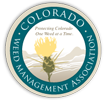
Honeylocust Pod Gall Midge
Damage caused by honeylocust pod gall midge
The honeylocust pod gall midge larvae cause affected leaflets to thicken, curl and form a small pod gall. The pod gall turns brown and drops off the honeylocust tree after the adult midge leaves the pod. They rarely kill a honeylocust tree, but the galls may be aesthetically unpleasant and severe infestations can destroy all new growth and kill branches.
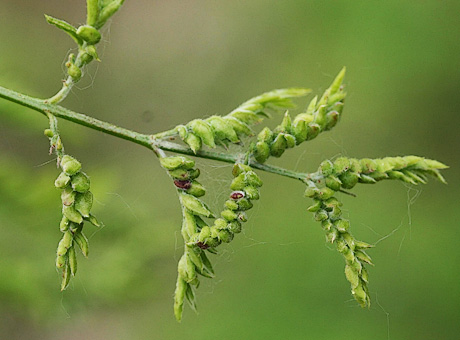 Whitney Cranshaw, Colorado State University, Bugwood.org
Whitney Cranshaw, Colorado State University, Bugwood.org
How to identify honeylocust pod gall midge
The honeylocust pod gall midge eggs are red, and laid in clusters. The larvae are cream-colored maggots, about 1/4" long. 2-8 maggots live in each pod gall. Adult honeylocust pod gall midges are tiny dark flies with long slender antennae, about 1/8" long
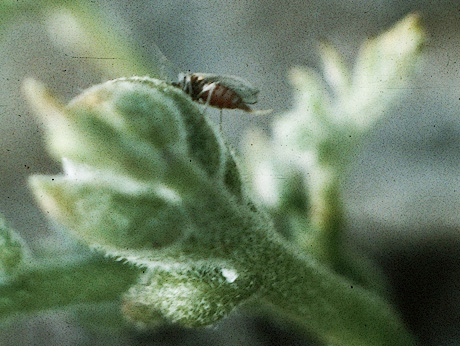 Whitney Cranshaw, Colorado State University, Bugwood.org
Whitney Cranshaw, Colorado State University, Bugwood.org
Life cycle of the honeylocust pod gall midge
Adult honeylocust pod gall midges emerge from the pupae in early spring when the honeylocust new growth appears. They swarm the honeylocust trees and lay eggs on the new growth. These eggs hatch in 1-2 days.The young larvae feed on the leaves, causing them to form a gall which protects and provides food for the larvae. The larvae pupates and then the adult midge exits the pod gall. The pod gall drops off the honeylocust tree after the adult honeylocust pod gall midge leaves the pod. Adults lay eggs on new growth, creating new generations about every 3-4 weeks. They are most active spring through mid-summer when the honeylocust new growth is available. They quit laying eggs when there is no more new growth. The honeylocust pod gall midge overwinter in cocoons in the soil near the base of the honeylocust tree.
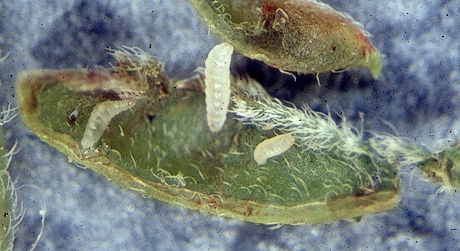 Whitney Cranshaw, Colorado State University, Bugwood.org
Whitney Cranshaw, Colorado State University, Bugwood.org
How to control the honeylocust pod gall midge
Severe weather, and natural predators kill many of the honeylocust pod gall midge maggots. They can be greatly reduced by removing the pod galls from the honeylocust tree by hand. Pesticide control is tricky because the honeylocust pod gall midge has many generations per year and the larvae are protected by the pod gall. The pesticides can be effective against the eggs if they are applied to new growth before the eggs hatch. We offer systemic controls for this pest that will cover all the life cycles with one treatment. Contact us to schedule a review of your locust to determine if a treatment is needed.
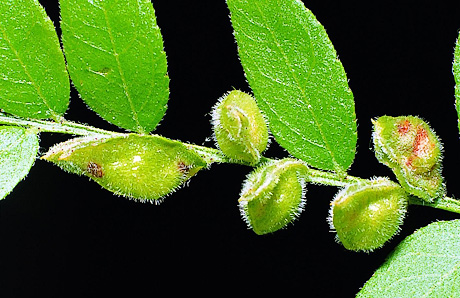 Gyorgy Csoka, Hungary Forest Research Institute, Bugwood.org
Gyorgy Csoka, Hungary Forest Research Institute, Bugwood.org
Other resources




